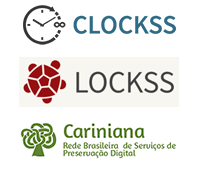Dossiê: Caminhos e lutas na formação de professores do Campo no Brasil
- Prof. Dr. Paulo Victor – ICENP - UFU
- Prof. Dr. Welson Barbosa Santos – ICENP - UFU
- Prof. Dr. Wender Faleiro - PPGEDUC/UFCAT
Prazo de envio dos artigos: 30 de junho de 2025.
OBS.: Condições obrigatórias para o artigo ser publicado:
- Pelo menos um dos autores deve ser doutor(a).
- O artigo precisa estar nas normas APA e não ABNT.
- Seguir as demais normas e diretrizes da revista (https://periodicos.ufnt.edu.br/index.php/campo/about/submissions ).
- No ato da submissão, marcar no metadado “Dossiê - Caminhos e lutas na formação de professores do Campo no Brasil”.









